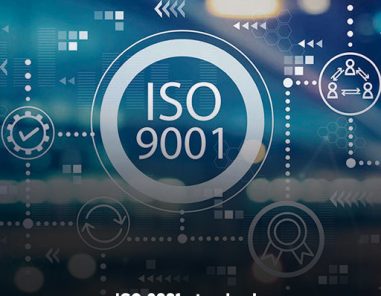
Standards of ISO 9001 full review
The ISO 9001 standard is one of the most popular standards related to quality...
Read MoreThe ISO 9001 certification gets your Quality Management System (QMS) recognised globally. It helps your business demonstrate your compliance and commitment to industry-accepted practises while staying competitive and opening yourself up to new business opportunities.
To gain certification, an organisation needs to demonstrate its ability to consistently provide products and services that meet customer requirements and applicable statutory as well as regulatory requirements. Additionally, organisations must aim to enhance customer satisfaction through the effective application of the system.
Effective application includes creating processes for improvement and providing assurance of conformity to the customer by adhering to applicable statutory and regulatory obligations. As ISO 9001 certificate is designed to be a powerful business improvement tool, it helps organisations to continually improve, streamline operations and reduce costs. In the following, we will learn more about how to get ISO 9001.

Organisations that adhere to the recommendations outlined in the ISO 9001 standard can reap benefits such as winning more business, competing in tenders, satisfying more customers, becoming more resilient and building a sustainable business. With so many benefits, business owners often misconstrue the nature of ISO 9001 and believe it to be more complicated than it is. In this article, we discuss the straightest path to achieve certification. In the article Benefits of ISO 9001, we have fully discussed the importance of ISO certification for businesses.
Here, it is important to remember that although there are three basic phases in the ISO 9001 certification process, it is beneficial to conduct some preparatory steps before jumping into the process.
It is essential to gain support for the processes within your organisation. If all your employees are not on-board to start the certification process, it can cause unnecessary delays due to ambiguity about the benefits of the certification. Hence, it is advantageous to inform the employees about the benefits of ISO 9001.
For example, ISO 9001 helps reduce disruptions and optimise your operations to eliminate extra work. This is the most lucrative advantage of ISO 9001 for employees. Additionally, even when a problem occurs, ISO 9001 makes it easier for your team to find its source and start fixing the issue.
Overall, the processes become cleaner and fewer mistakes are created, thereby lowering the need for rework for employees. Another attractive benefit of implementing the ISO 9001 recommendations into your organisation is that power is placed directly into the hands of the employees. As employees work directly with your processes, they are given an advantage for spotting problems. It becomes extremely encouraging for employees as they are allowed to speak on these issues and work on ways to solve them.

Without adequate goals, there will be no priorities and distractions will hit you. Therefore, to properly align yourself for the opportunities that might open after acquiring the ISO 9001 certification, it is necessary to set defined parameters. You will want to consider how you can enhance your operation and create objectives within your organisation.
This will begin by asking yourself how you want to apply the ISO 9001 into your organisation. Ask yourself if you want to apply the ISO 9001 recommendations in specific areas or gradually across all processes. Additionally, you need to ask yourself what you want to achieve and determine a plan to achieve these goals. Studying the article “What is ISO 9001” can help you formulate your goals.

After you have gained the adequate support and set the necessary goals, you can begin working on the primary steps for acquiring the certificate. These include:
To begin the ISO 9001 certification process, you need to define how the company appropriately applies the recommendations. Here, specific documents need to be prepared to determine your company’s current status of the QMS.
Examples of the documents that an organisation needs to become certified include:
These seven documents have to define the company’s quality management system in detail. After documentation, the company management must think through the best method to implement the ISO 9001 requirements to fit their business.
Essentially, implementation means that the requirements are communicated and followed across the organisation. As ISO 9001 affects all employees, changes would be expected and therefore everyone within the organisation must support the effort. The top management must provide direction, support and oversight through a formal management review which oversees the implementation and maintenance of the QMS.
This is essential as one of the main requirements of the ISO 9001 certification is a management review where the leadership defines its commitment to the QMS. The management review allows the top leaders to monitor how well the QMS is working, track performance issues that need to be addressed and determine necessary changes. ISO Consulting in Australia will help you to complete these steps easily.
The final step in the ISO 9001 certification process is to conduct a full internal review to verify that the QMS is in place and is effective. Internal audit is a powerful tool of the top management to help them evaluate the implementation and functioning of the QMS. This audit is conducted by the company’s internal auditors on behalf of the management and the agenda for it is always flexible. The results of the internal audit are presented during the management review to ensure that proper corrections are made
After defining the QMS by preparing the required documentation, implementing the QMS by establishing the management review and verifying the QMS by completing the internal audit, you are now ready for the ISO 9001 certification audit.
ISO certification gives your organisation a competitive edge. By helping you increase operational efficiency and overall product consistency, your business credibility and authority will soar to new heights.

Copyright © 2022 The ISO Council | Privacy Policy